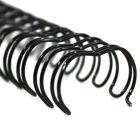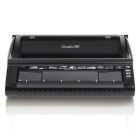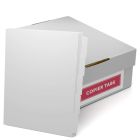Making Your Own Short Story Anthology
Putting together an anthology of short stories, whether of your own work or that of others, can be a fun and rewarding project. Here are some hints and tips to help get you started.
Decide On A Theme:
Here is where a little bit of research can help get you started. Take a trip down to your local library, bookstore, or even your own book shelf and take a good look at the short story anthologies that are there. You may notice that most of the best ones are centered around a theme, such as "the best short fiction from writers under 25" or "the best fly fishing short stories" or something of the sort. The latter is a great example of a niche that can really work well because it may be unexplored and has a devoted following. Whatever you end up deciding your them will be, do your best to make sure it is something that your audience will enjoy and that there is a market for.
If you are creating an anthology of your own work, of course, then you yourself are the theme. Put your finished, well-edited stories in an order you like. It could be chronological, for instance, but it is best to place your best work at the beginning of the anthology.
Asking For Submissions:
There are a few ways to go about this, but to do any of them well, you should first set up an attractive website that your prospective contributors can visit and see what the parameters are. In order to get visitors to your site, you should join and contribute to as many online writer's forums as you can find. Take a little bit of time to introduce yourself and gain a little bit of trust, then let them know that you are putting together an anthology and looking for submissions.
The website should contain the following information: the theme, expected length of the stories, and deadline. Let the writers know how and if they will be compensated. Be ready for a flood of submissions, and to have a tactful way to inform the writers whose stories you are rejecting that they will not be included.
Organizing The Book:
There is no hard and fast rule here, but as alluded to above, you will want to put the best two to three stories in the beginning of the book. Save one of the better ones that remain for last.
As the curator and editor, you should write a nice introduction that explains your theme and that thanks the writers. At the end of the book, create a biography page where each of your writers has included a bio and, if there is enough space, a thumbnail photo.
Binding:
When it comes to printing and binding, there are a few different choices, depending on the scale of your project. Printing should be high-quality laser. As far as binding, you will probably want to go with a hardcover or softcover look. These types of books are bound in what in known as "thermal" binding machines. These machines are remarkably easy to use and inexpensive as well, so if you are going to be doing a lot of publishing, and have a do it yourself spirit, you may enjoy the savings and flexibility of owning your own binding machine.









